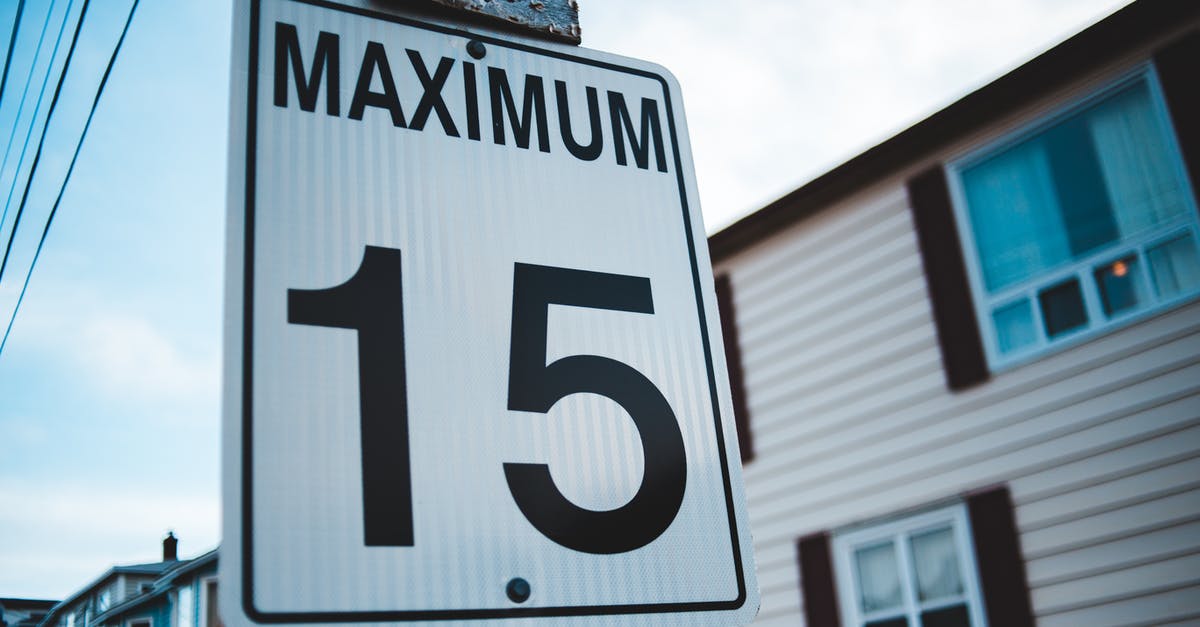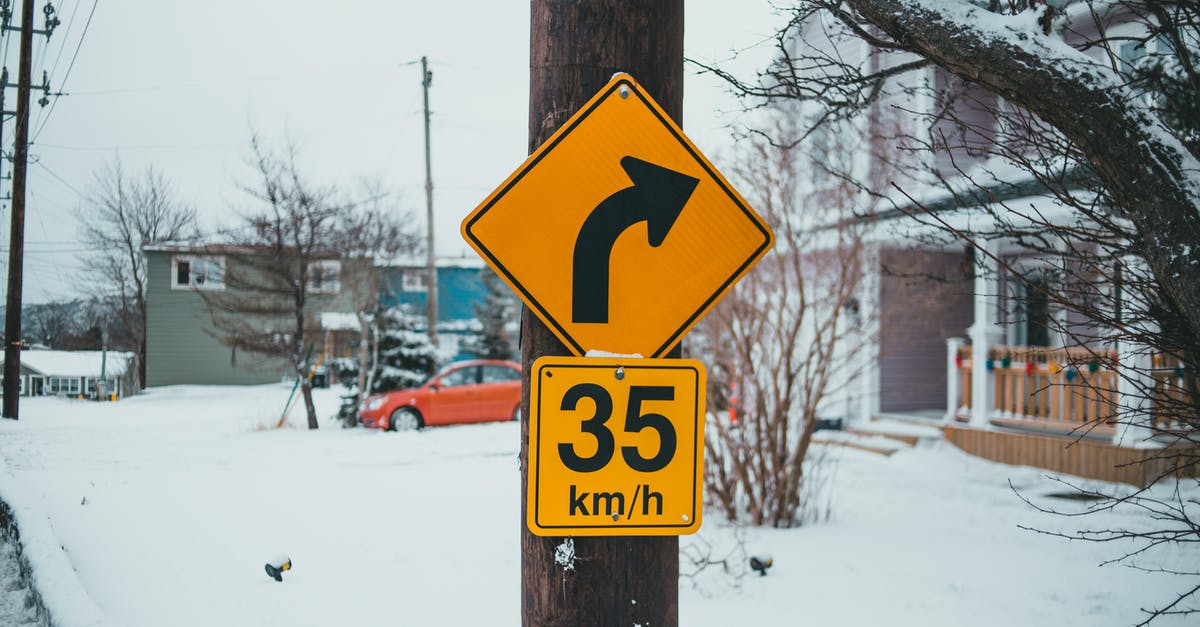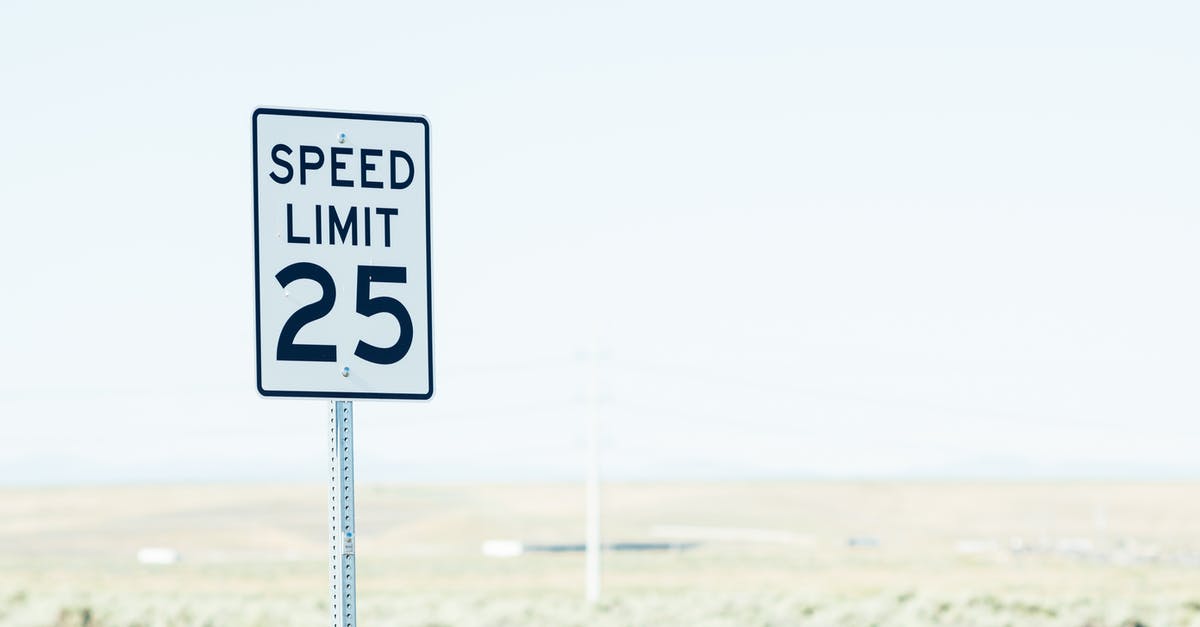How to find out the speed limit in the US?

As I recently learned on this site, US speed limits are not always posted on the street and can vary between different cities even in the same state.
Where do I find this information? Is there any (official) online resource preferably with other traffic related regulation that changes place to place?
Best Answer
Wikipedia has a summary article on American speed limits, and more detailed speed limits by state.
Most cities and states have default speed limits, for places where the speed limit is not posted. Theoretically, people can look up these speed limits. In practice, the following default speed limits are very common, and most Americans assume them unless they have reason to believe otherwise. From higher priority to lower priority:
- You can break the speed limit (or almost any other traffic law, including red lights) if that is the best way of avoiding an immediate accident.
- Do not go faster than is safe, considering your vehicle, tiredness, road conditions, and weather conditions. (Some states, like Montana, would rather have just this law than have arbitrary limits. Unfortunately, some courts disagreed.)
- If you cannot safely travel faster than 15 miles per hour, (and you are not in snow, fog, or stop-and-go traffic) you need to have either blinking warning lights on and/or a reflective triangular "slow vehicle" sign. (Many farm tractors have these signs.)
- If your vehicle is (partially) disabled, so that you must go much slower than most traffic, consider using your blinking warning lights.
- Posted speed limits.
- In parking lots, 5 - 10 miles per hour is usually a reasonable speed. (So blinking warning lights are not necessary, because they are redundant.) Many states have a default speed limit of 15 miles per hour in alleys, because they are halfway between parking lots and residential streets.
- Most "school zones" (streets within 1/8 mile of schools with children between ages 5 and 12) have speed limits of 25 miles per hour "when children are present". (In Delaware, Florida, Massachusetts, New Hampshire, Oregon, Rhode Island, and Washington State, this speed limit is 20 miles per hour; in Arizona, New Mexico, Pennsylvania, Tennessee, West Virginia, and Wisconsin it is 15 miles per hour.) Wikipedia has more details.
- Most residential streets have speed limits of 25 miles per hour.
- Major streets in cities usually have posted speed limits between 30 and 45 miles per hour.
- Most country roads have default speed limits of 55 miles per hour (50 miles per hour in New Jersey, Rhode Island, Vermont, and Washington; 45 miles per hour in Puerto Rico). Wikipedia has more details.
- In heavily populated areas, most major highways (such as interstates) have default speed limits of 55 miles per hour.
- In sparsely populated areas, most major highways (such as interstates) have default speed limits of 65 miles per hour. (Some states have raised this limit to 70 or 75 miles per hour.)
In practice, speed limits are treated as "suggested speeds". Most roads are designed to be safe (in well-maintained "street-legal" vehicles in daylight, with clear, dry weather and awake, sober drivers) for speeds about 20 percent faster than the posted speed limit.
Many jurisdictions have "minimum speed" laws. If the weather is good, and there are no traffic jams, and you cannot stay within 10 miles per hour of the nominal speed limit, then you should probably find a different road. Of course, if everybody is going slowly, you should also go "with the flow of traffic".
In many places, people expect to go as fast as they (more-or-less) safely can go. In these places, a person who scrupulously stays just below the speed limit might be dangerous, and might be more likely to be "pulled over" by police for other alleged infractions. (Many drunk drivers travel suspiciously slowly; many drug smugglers follow the law so precisely that it makes the police suspicious.)
Some states (such as Washington) have "keep right except to pass" laws. In these states, the left lane of major highways is effectively reserved for speeders. Also, if several cars have stacked up behind you, you should try to let them pass when it is safe to do so. Some roads have "slow lanes" or pull-outs so that slow vehicles can let regular vehicles pass them.
Pictures about "How to find out the speed limit in the US?"



How do I find the national speed limit?
You can find the speed limit in the bottom left corner of the screen on Google Maps. With the speed limit, you are intimated about the duration of the journey, remaining distance, and estimated time of arrival. How do I activate speed limits in Google Maps on Android?Can you see speed limit on Google Maps?
Speed limitsState or territoryFreeway (rural)Freeway (urban)California65\u201370 mph (105\u2013113 km/h)50\u201365 mph (80\u2013105 km/h)Colorado65\u201375 mph (105\u2013121 km/h)55\u201375 mph (89\u2013121 km/h)Connecticut65 mph (105 km/h)45\u201355 mph (72\u201389 km/h)Delaware65 mph (105 km/h)50\u201365 mph (80\u2013105 km/h)54 more rowsWhat are the speed limits in USA?
They are set using an engineering speed study and in accordance with guidance in the Manual on Uniform Traffic Control Devices (MUTCD). State and local transportation agencies recommend and set appropriate speed limits by completing engineering speed studies and following the guidance presented in the MUTCD.How Do We Decide Speed Limits?
More answers regarding how to find out the speed limit in the US?
Answer 2
There is generally no official database that provide you with the speed limits on various roads because State and Local authorities can specify speed limits on the roads within their jurisdiction case in point New York City.
But there are places where you can find it such as Wikispeedia or Open Street Maps as described in the help discussion.
Answer 3
Towns sometimes post the default speed limit on a sign near the city limits.
In my experience, densely populated areas will almost always have speed limits posted everywhere, except on residential streets. For residential streets, the speed limit should be at least 25 mph.
For gravel roads out in the middle of nowhere, it's anyone's guess, but it should be at least 25 mph. If you want to know the speed limits for rural areas, you would have to look up the phone number or website for every town or county you'll be driving through, and ask about default speed limits.
Knowing the speed limit won't generally be a problem if you stick to more populated areas, and remember to drive 25 mph in residential areas.
Answer 4
Many GPS driving devices or apps will tell you the speed limit for your current location.
For example: List of Garmin devices with speed limit indicator
Sources: Stack Exchange - This article follows the attribution requirements of Stack Exchange and is licensed under CC BY-SA 3.0.
Images: Erik Mclean, Erik Mclean, Brett Sayles, Mike B
